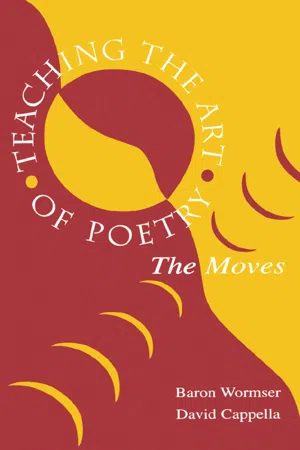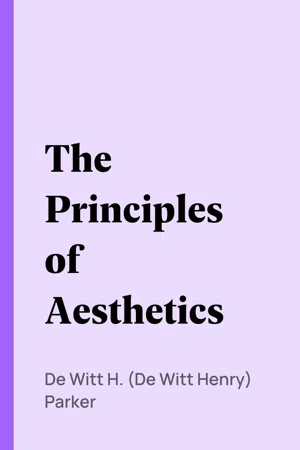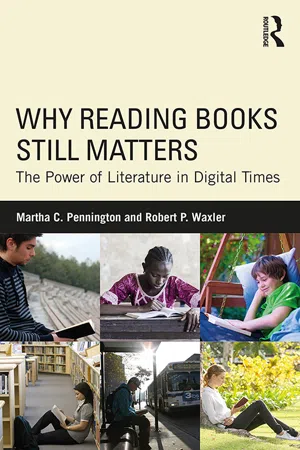Literature
Verse
A verse is a single line of poetry or a stanza within a poem. It is characterized by its rhythm, meter, and often rhyme scheme. Verses are used to convey emotions, ideas, and imagery in a structured and artistic manner.
Written by Perlego with AI-assistance
5 Key excerpts on "Verse"
- eBook - ePub
Teaching the Art of Poetry
The Moves
- Baron Wormser, A. David Cappella(Authors)
- 1999(Publication Date)
- Routledge(Publisher)
3Line
Summary
Poems are written in lines. In metered poetry the line is the sum of x number of rhythmic units. In free Verse the lengths of lines are determined by a variety of intentions such as ending lines where syntactic units end, running lines across syntactic units, stopping lines to coincide with punctuation, and using line lengths to imitate physical effects. How quickly or slowly a free-Verse poem proceeds depends a good deal on whether lines are enjambed (run on) or not, how long the lines are, and how much variation there is among the line lengths. There are some poems that are neither metrical nor free Verse, they are syllabic: The poet counts the number of syllables in a line and uses a pattern based on syllable counts. A haiku is an example of a poem organized according to the number of syllables per line.Unlike prose, which travels automatically across the page until it hits the right margin and then dutifully returns to the left margin, poetry moves across the page in lines that typically end well short of the right margin. The length of these lines is carefully considered by the poet because the line is the bearer of rhythm. The accents, sounds and pauses all consort within the propulsive line that moves steadily forward in time. Poetry always has been an oral art and the bards and reciters who once spoke and chanted their poems in Greek and Latin and Gaelic and Spanish and Russian (among many languages) used the line to help them keep time with a musical accompaniment, to keep track of rhythms (so many accents or syllables to a line), and to provide a rule of thumb in organizing and memorizing a poem that could be thousands of lines long. The line was (and remains) the staple of the poem just as the sentence is the staple of prose.The beauty of lines is that they are infinitely flexible. They hold all number and manner of syllables and accents; they can be of the same length or vary in length; they can begin at the left margin or somewhere else on the page; they can enact any array of syntactic arrangements; they can be built into stanzas of various lengths; a line can run onto the following line (“enjambment” is the poet’s word) or end with a period that coincides with the end of the line. For poets the line has an intensely physical quality because each line is shaped according to the dictates of rhythm, syntax, and meaning. Each line of a poem has a tangible weight, pace, and presence. (1) - eBook - ePub
The Princeton Encyclopedia of Poetry and Poetics
Fourth Edition
- Stephen Cushman, Clare Cavanagh, Jahan Ramazani, Paul Rouzer, Stephen Cushman, Clare Cavanagh, Jahan Ramazani, Paul Rouzer(Authors)
- 2012(Publication Date)
- Princeton University Press(Publisher)
metered lines , versification pertained mostly to descriptions of craft. Now that boundaries between Verse and prose have become less distinct and poetry, for many, serves as a general term for artful lang., discussions of versification have necessarily become more prescriptive, as they advance particular views of what poetry is or should be.Wimsatt; P. Fussell, Poetic Meter and Poetic Form , rev. ed. (1979); J. Hollander, Figure of Echo (1981), and Rhyme’s Reason: A Guide to English Verse (1981); Attridge, Rhythms ; The Line in Postmodern Poetry , ed. R. J. Frank and H. M. Sayre (1988); G. T. Wright, Shakespeare’s Metrical Art (1988); J. McCorkle, ed., Conversant Essays, Contemporary Poets on Poetry (1990); T. Steele, Missing Measures: Modern Poetry and the Revolt against Meter (1990); S. Cushman, Fictions of Form in American Poetry (1993); Gasparov, History ; H. Gross, Sound and Form in Modern Poetry , 2d ed. (1996); Finch and Varnes; R. Abbott, “T. S. Eliot’s Ghostly Footfalls: The Versification of ‘Four Quartets,” Cambridge Quarterly 4 (2005): 365–85; Radiant Lyre: Essays on Lyric Poetry , ed. D. Baker and A. Townsend (2007); J. Longenbach, The Art of the Poetic Line (2008).R. WINSLOWVERSI SCIOLTI (It., versi sciolti da rima , “Verses freed from rhyme”). In *Italian prosody, Verses (generally *hendecasyllables, i.e., endecasillabi sciolti ) not bound together by *rhyme or grouped in regular *strophes. Versi sciolti appear late in the 13th c. in the anonymous satire the Mare amoroso but were first cultivated during the Ren. as the It. equivalent of the cl. *epic meter, the *hexameter. Giangiorgio Trissino used them in his tragedy Sophonisba (1524; cf. his treatise La poetica , 1529) and in his epic L’Italia liberata dai Goti (begun 1528, pub. 1547), as did Torquato Tasso in his Le Sette giornate del mondo creato sophonisba (1594). They quickly became the preferred meter for It. trans. of cl. epics (e.g., Annibale Caro’s Eneide , 1581). Despite Trissino’s lack of success, however, a controversy arose between the advocates of cl. austerity and the advocates of rhyme. In the 16th c., rhyme won the day, but in the 18th c. and thereafter, versi sciolti were used with great success, particularly by Giuseppe Parini (Il Giorno , 1763–1801), Ugo Foscolo (I Sepolcri , 1807), Giacomo Leopardi (some of I Canti , 1831), and Alessandro Manzoni (Urania , 1807). Vittorio Alfieri almost single-handedly made them the standard meter for *tragedy. In the 20th c., the dramatist Sem Benelli used them, as did Giovanni Pascoli in his Poemi Conviviali (1904) and, to a lesser extent, Guido Gozzano, Umberto Saba, Giuseppe Ungaretti, and Franco Fortini. Endecasillabi sciolti - eBook - ePub
- Stephen Matterson, Darryl Jones(Authors)
- 2011(Publication Date)
- Bloomsbury Academic(Publisher)
Paradise Lost :Of man’s first disobedience, and the fruitcan be divided up as follows:Of that forbidden tree, whose mortal taste33Of man’s / first dis / obed / ience and / the fruit Of that / forbid / den tree / whose mor / tal tasteNote here that the division into feet does not necessarily respect the integrity of individual words but rather of morphemes – units of sound – or syllables. This line, subdivisible into five metrical feet, is the pentameter (from the Greek ‘penta’ + ‘meter’, ‘a measure of five’). Note also that both these lines contain a caesura, a break or pause in the line, usually at or near its centre:Of man’s first disobedience // and the fruit Of that forbidden tree, // whose mortal tasteThese lines also use enjambment , the running-on of a poetic unit of signification from one line to the next: ‘and the fruit / Of that forbidden tree’ is one phrase, and thus the lines might be divided into three phrases, roughly consistent with breath-pauses: ‘Of man’s first disobedience / and the fruit Of that forbidden tree / whose mortal taste’.Metrics is the specific study of poetic metre; scansion the annotation of metre. Metre is usually annotated by dividing the metrical feet into ‘stressed’ (given the symbol ′) or ‘unstressed’ (∪) syllables depending on the weight given by the voice in pronunciation. The iambic metre – an unstressed syllable followed by a stressed one (∪), was, until the twentieth century, by far the dominant one in English poetry: the dominant metre (albeit with frequent deviations) of Chaucer’s Canterbury Tales , Shakespeare’s plays and sonnets, the poetry of John Dryden and Alexander Pope, of Wordsworth’s The Prelude , Coleridge’s The Rime of the Ancient Mariner - eBook - ePub
- De Witt H. (De Witt Henry) Parker(Author)
- 2004(Publication Date)
- Perlego(Publisher)
But speech has not only its natural rhythm of stress-undulation and thought-pulsations; it has also, as we saw in the last chapter, a melody. The rise and fall of stress goes hand and hand with a rise and fall of pitch. The different forms of discourse, and the different emotions that accompany them, are each expressed with characteristic variations in pitch. Accepting Wundt's summary of the facts, we find that, generally speaking, in the declarative statement and the command, the pitch rises in the first thought-division, to fall in the second; while in the question and the condition, the pitch rises and falls in the first, and then rises again in the second. Doubt, expectation, tension, excitement—all the forward looking moods of incompleteness—tend to find expression in a rising melody; while assurance, repose, relaxation, fulfillment, are embodied in a falling melody. The high tones are dynamic and stimulating; the low tones, static and peaceful. Now in ordinary speech and prose, the change from one tone to another is constant and irregular, following the variation of mood in the substance of the discourse. How is it with Verse? There is a simplification and tonality—identity in tone—which is absent from prose. The melody is more obvious and distinctive, because there is a greater simplicity in sentence structure and a higher unity of mood. Yet there is no absolute regularity; and the amount of it differs with the different kinds of poetry: there is more in the simple lyric than in the complex narrative; more, for example, in Shakespeare's sonnets than in his dramas. The inexpressible beauty of some lines of Verse comes doubtless from a fugitive melody which we now grasp, now lose.The existence of speech melody and the tonalities of rime, assonance, and alliteration suggest an analogy between Verse and music. For some people, this analogy is decisive. Yet the fundamental difference between music and Verse must be insisted on with equal force; the purity of tone and fixity of intervals between tones, which is distinctive of music, is absent from Verse. In comparison with music, the melodiousness of Verse is confused and chaotic; and this condemns to failure any attempt to identify the laws of the two arts. Still, we are not yet at the end of the analogy. Those who interpret Verse in terms of music believe that, underlying or supplanting the rhythm of stress, there is another rhythm, similar to time in music, and capable of expression in musical language. There is, it is claimed, an equality of duration between one line and another, and between one foot in a line and another; these larger and lesser stretches of duration being divided up between syllables and pauses, each syllable and pause occupying a fixed quantity of time; just as in music each bar is divided up between notes and rests of definite value. Lanier, for example writes the first line of Poe's "Raven" as follows:—[Footnote: The Science of English Verse, p. 128.][Illustration] Once up | on a | mid-night | drear-y;Fascinating as this procedure is, it is nevertheless a distortion of the facts. Poetry is meant to be read, not to be sung; when it is put to music and sung, it acquires a character which otherwise does not belong to it. We must not be misled by the historical connection between Verse and song, nor by the frequency with which some Verses are set to music. Our poetry must be understood as we experience it to-day, not as it was experienced in its origins. And there is surely much poetry which no one wants to sing. No one wants to sing a sonnet or Miltonic blank Verse. The attempt to apply musical notation to Verse is a tour de force - eBook - ePub
Why Reading Books Still Matters
The Power of Literature in Digital Times
- Martha C. Pennington, Robert P. Waxler(Authors)
- 2017(Publication Date)
- Routledge(Publisher)
The Routledge Handbook of Language and Creativity on “Poetry and Poetics,” cites as a distinctive characteristic of poetry, “it aims to generate more new thoughts and imaginings (more surprises, or unforeseen ideas) in more recipients (in more times, and more places), while itself taking up less time and less space than all other verbal genres” (Toolan, 2016, p. 235).As compared to other forms of writing, a poem is both compact and highly designed. A feature of poetry is its prosody, its meter or rhythm, and the phonetic properties and patterns in its words, such as rhyming, alliteration (repetition of consonant sounds in neighboring words), or assonance (repetition of vowel sounds in neighboring words). Rhythm and rhyming, along with other aspects of sound patterning in the words and lines of a poem, help to build a “soundscape” (Morley, 2007) that provides structure for the grammar and rhetoric of the poem (its langscape more generally) and also helps to construct the specific meaning of the words, how they will be received in terms of the images and associations a reader will be encouraged to make. The prosodic features of a poem are primary in capturing a reader’s attention, focusing that attention, and moving the reader through the poem in a certain way and at a certain speed.An Example of a Literary Poem about Trees
A literary poem is an aesthetic object, an object of beauty which, like other beautiful things, produces an emotional effect in those who absorb its language. A poem is also a linguistic object, which, like other linguistic objects, makes sense but generally means in a way that may not be entirely transparent at first. A poem therefore engages the intellect, making the person who engages with it think about its meaning. A poem can lead people deep within themselves, to the exercise of their mental reflective abilities that result in understanding and new insights. Poems can cause readers to reflect on things already known, giving them aah moments, and to discover new things, giving them aha! moments. As thinking creatures, humans take pleasure in contemplation, of both familiar and unfamiliar things, and especially in things which are partly familiar and partly novel. The combination of familiar resonance (aah moments) with novelty (aha!
Index pages curate the most relevant extracts from our library of academic textbooks. They’ve been created using an in-house natural language model (NLM), each adding context and meaning to key research topics.
Explore more topic indexes
Explore more topic indexes
1 of 6
Explore more topic indexes
1 of 4




